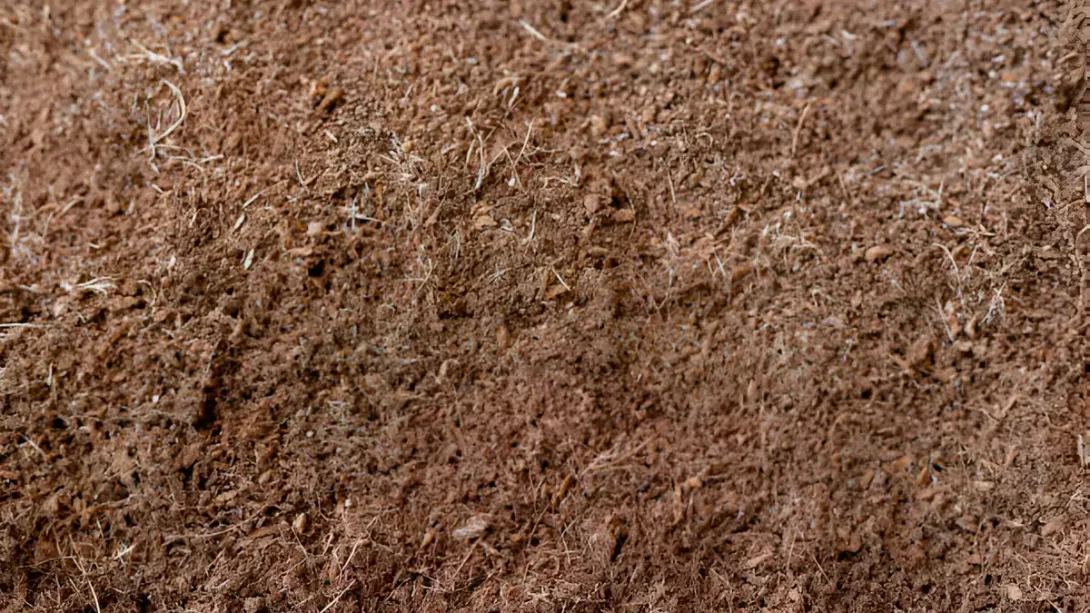In the world of gardening and sustainable agriculture, coco peat has emerged as a popular and eco-friendly alternative to traditional growing mediums. Derived from the fibrous husks of coconuts, coco peat, also known as coir pith or coir dust, has garnered attention for its versatile uses and environmental benefits. This article aims to explore the various aspects of coco peat, from its origins to its applications in modern horticulture.
Coco Peat
Coco peat is a natural by-product of the coconut industry, made from the fibrous material found between the hard shell of the coconut and the outer coat of the coconut husk. This fibrous material is processed and broken down to create a fine, peat-like substance. Unlike traditional peat moss, which is harvested from peat bogs and can take centuries to form, coco peat is a more sustainable option as it utilizes a renewable resource and is a by-product of coconut production.
Characteristics of Coco Peat
Coco peat possesses several characteristics that make it favorable for use in gardening and agriculture:
- Physical Properties: It is a lightweight, fluffy material with a natural brown color. Its texture can range from fine to coarse, depending on the level of processing.
- Water Retention Capacity: Coco peat is known for its high water retention capacity, which allows it to hold moisture for a long time, reducing the need for frequent watering.
- pH Level and Nutrient Content: Typically, coco peat has a neutral to slightly acidic pH level, making it suitable for a wide range of plants. While it is low in nutrients, this can be an advantage as it allows gardeners to customize the nutrient mix according to the needs of specific plants.
Benefits of Using Coco Peat
Coco peat offers numerous advantages for both casual gardeners and professional growers, making it a sought-after medium in various horticultural applications:
- Enhanced Water Retention: Its ability to retain water significantly reduces the need for frequent watering, making it ideal for drought-prone areas or for growers seeking to conserve water.
- Improved Soil Aeration: The structure of coco peat allows for better aeration in the soil, promoting healthier root growth and preventing issues like root rot and fungal infections.
- Sustainability and Eco-Friendliness: As a by-product of the coconut industry, coco peat is a more sustainable alternative to peat moss, which comes from slowly renewing peat bogs. Its use helps in reducing the environmental footprint of gardening and agricultural practices.
Applications of Coco Peat
Coco peat’s versatility makes it useful in a variety of gardening scenarios:
- Seed Starting and Potting Mixes: Its fine texture and moisture retention make it an excellent medium for germinating seeds and as a component in potting mixes.
- Hydroponics: In hydroponic systems, coco peat serves as an effective, inert growing medium, supporting plant growth without soil.
- Container Gardening: For potted plants, coco peat helps in maintaining moisture and providing adequate root aeration.
How to Use Coco Peat in Gardening
Integrating coco peat into gardening practices can be done in several ways:
- Rehydration: Coco peat often comes in compressed forms and needs to be rehydrated before use. Soaking it in water allows it to expand and become ready for planting.
- Mixing with Soil: Coco peat can be mixed with soil to improve its moisture retention and aeration properties. A common ratio is to mix one part coco peat with two parts soil or compost.
- Direct Planting: In some cases, plants can be grown directly in coco peat, especially when it’s used as a part of a hydroponic setup or for rooting cuttings.
Sustainability and Environmental Impact
The use of coco peat is often lauded for its sustainability. As a by-product of the coconut industry, it repurposes waste material, providing an environmentally friendly alternative to peat moss. Harvesting peat moss can lead to the destruction of peat bogs, which are important carbon sinks. In contrast, coco peat’s production does not harm vital ecosystems, making it a more sustainable choice for environmentally conscious gardeners.
- Renewable Resource: Unlike peat moss, which takes centuries to form, coco peat comes from a renewable resource – coconuts. This ensures a more sustainable and continuous supply.
- Carbon Footprint: Utilizing coco peat helps in reducing the carbon footprint associated with gardening and farming, as it is a more eco-friendly substitute for peat moss.
Potential Drawbacks
While coco peat has many benefits, there are a few considerations to keep in mind:
- Low Nutrient Content: Coco peat is naturally low in nutrients. Therefore, it needs to be supplemented with fertilizers or mixed with compost to provide sufficient nutrients for plant growth.
- Salinity: Some coco peat products may contain high salt levels, which can be detrimental to plant health. It’s important to choose high-quality, washed coco peat, or to rinse it before use to remove excess salts.
- Water Management: Due to its high water retention, over-watering can be a concern, especially in less breathable containers or in humid climates.
Safe Disposal and Reusability
Coco peat is not only useful in its primary role as a growing medium but also in its disposability and reusability:
- Reusability: It can be reused for multiple growing seasons, reducing waste and the need for new resources.
- Composting: After its use in gardening, coco peat can be composted, contributing to a sustainable cycle of organic matter.
Conclusion
Coco peat stands out as a versatile, sustainable, and effective medium for various gardening and agricultural applications. Its ability to retain water, improve soil aeration, and its eco-friendly nature make it a valuable resource for modern horticulture. While mindful of its few limitations, gardeners and farmers can greatly benefit from incorporating coco peat into their practices, contributing to more sustainable and environmentally friendly growing methods. Understanding and utilizing coco peat can thus be an important step towards a greener future in gardening and agriculture.



